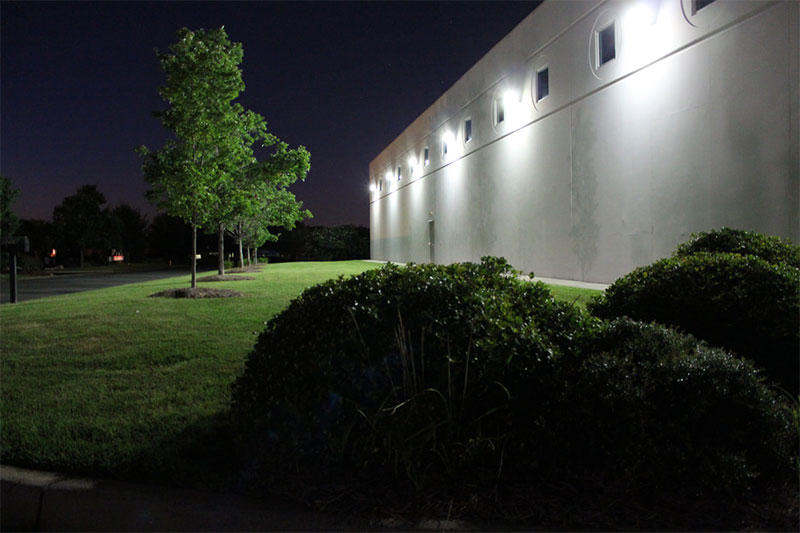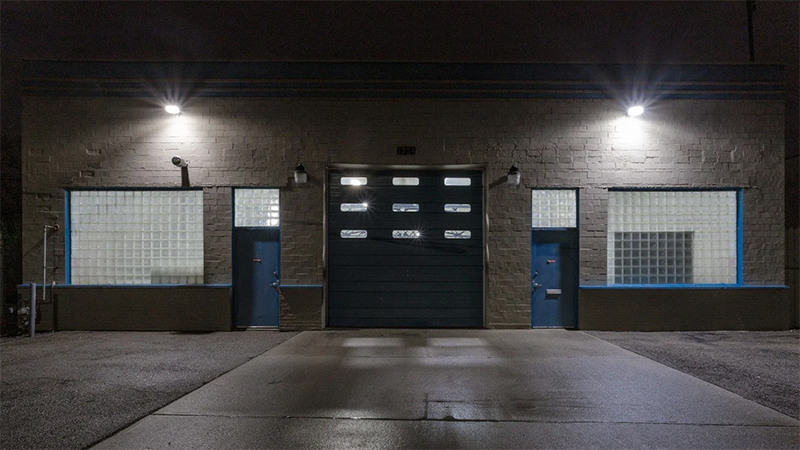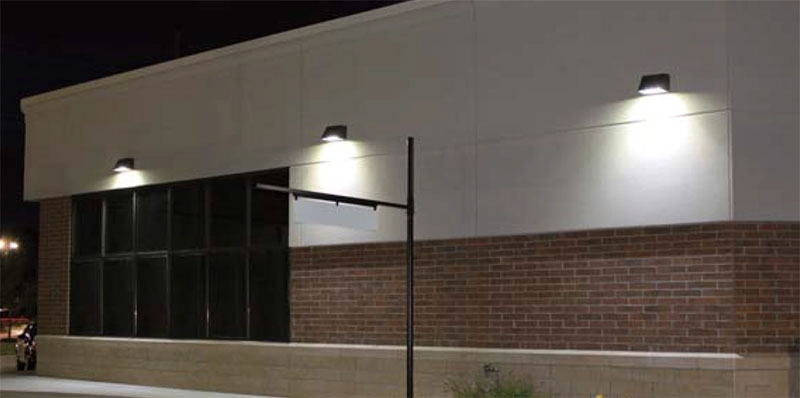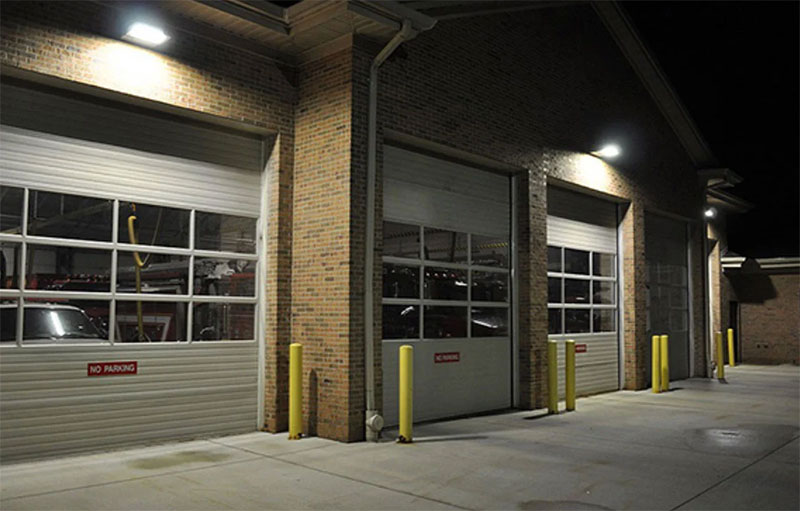1. What are wall packs in lighting?
Wall packs are outdoor lighting fixtures that are mounted on exterior walls to illuminate outdoor areas, enhancing both safety and security. These fixtures are widely used in various settings, such as pathways, entrances, parking lots, and commercial exteriors. Wall packs come in different designs and can integrate various types of lighting technologies including LED, Metal Halide, High-Pressure Sodium, and Compact Fluorescent.
2. How do I choose a wall pack light?
Choosing the right wall pack light involves considering various factors including the specific requirements of your space, energy efficiency, and additional features that can enhance usability. Here's how you can go about choosing a wall pack light:
Step 1: Assess Your Space and Requirements
Area to be Illuminated: Determine the size of the area that needs to be illuminated. Larger areas will require wall packs with higher lumen outputs.
Purpose of the Lighting: Identify the primary purpose of the lighting—whether it is for security, accent lighting, or general illumination.
Existing Lighting: Consider any existing lighting in the area to ensure a harmonious lighting plan.
Step 2: Technical Considerations
Lumen Output: Choose a wall pack with a lumen output suitable for your needs. A higher lumen output means brighter light.

Color Temperature: Decide on the color temperature based on the desired ambiance. Typically, 3000K offers warm white light, 4000K offers cool white light, and 5000K offers daylight white light.
Color Rendering Index (CRI): This is a measure of how accurately the lighting reveals the colors of objects. A higher CRI indicates better color rendering.
Energy Efficiency: Consider the energy efficiency of the wall pack. LED wall packs are generally more energy-efficient compared to other types of lighting technologies.
Step 3: Fixture Specifications
Design and Aesthetics: Consider the design and aesthetics of the wall pack to ensure it complements the architectural style of your building.
Material and Durability: Choose a wall pack made from durable materials to withstand weather conditions and other outdoor elements.
Ease of Installation: Consider wall packs that are easy to install, preferably ones that come with mounting accessories and an installation guide.
Step 4: Additional Features
Dimmability: If you want to control the brightness levels, choose a wall pack with dimming capabilities.
Sensors: Consider wall packs with integrated sensors such as motion sensors or dusk-to-dawn sensors for added convenience and energy savings.
Emergency Features: In case of power outages, having a wall pack with emergency backup can be beneficial.
Step 5: Budget and Warranty
Budget: Determine your budget for the lighting project and try to find a wall pack that meets your requirements within that budget.
Warranty: Look for products that come with a warranty to ensure that you are covered in case of any defects or issues.
Step 6: Compliance and Certifications
Local Regulations: Check local regulations and guidelines concerning outdoor lighting to ensure compliance.
Certifications: Look for wall packs with certifications such as DLC, UL, or ETL which indicate that the product meets certain industry standards.
Step 7: Vendor and Brand Reputation
Vendor Reputation: Purchase from reputable vendors who offer quality products and good customer service.
Brand Reputation: Consider the reputation of the brand and read reviews to get an idea of the product's performance and reliability.

Step 8: Trial and Testing
Trial Period: If possible, opt for a trial period to test the wall pack in your space to ensure it meets your expectations.
Remember to also consult with a lighting professional or a contractor, if necessary, to help you choose the best wall pack lighting for your space.
3. What is the height of a wall pack light?
The installation height of a wall pack light can vary significantly depending on various factors including the specific application, the design of the space, and the type of wall pack light being installed. Generally, wall pack lights are installed at heights ranging from 8 to 20 feet above the ground. Here are a few guidelines and considerations to help you determine the optimal installation height for wall pack lights:
General Guidelines
Commercial and Industrial Areas: In commercial and industrial settings, wall pack lights are typically installed at heights ranging from 15 to 30 feet to adequately illuminate large areas and ensure safety and security.
Residential Areas: In residential settings, wall pack lights might be installed at lower heights, typically between 8 and 15 feet, to illuminate walkways, driveways, and entrances.
Pedestrian Areas: In pedestrian areas such as walkways and paths, a lower installation height (e.g., 8 to 12 feet) might be more appropriate to create a welcoming and well-illuminated space.
Factors to Consider
Lumen Output and Beam Spread: Consider the lumen output and beam spread of the wall pack light. Higher lumen outputs and wider beam spreads may allow for higher mounting heights.
Purpose of Lighting: Consider the primary purpose of the lighting. For security lighting, a higher installation height might be preferable to cover a larger area, while for accent or architectural lighting, a lower height might be more appropriate.
Building Height and Architecture: The height and architecture of the building on which the wall pack light will be installed should be taken into account to ensure harmonious integration.
Expert Advice
Consult with a Lighting Designer or Engineer: If you're unsure about the optimal installation height for your wall pack lights, consult with a lighting designer or engineer to get expert advice based on your specific circumstances.
Lighting Simulations: In some cases, lighting professionals might conduct lighting simulations to determine the best installation height to achieve the desired lighting effect and coverage.
Safety Considerations
Avoid Glare: Installing wall packs at the correct height can help to avoid glare, which can be blinding and create safety hazards.
Uniformity of Lighting: Ensuring a uniform distribution of light by installing wall packs at the correct height can create a safer and more comfortable environment.
Adjustments and Fine-Tuning
Testing: After installation, it might be necessary to fine-tune the installation height based on the actual performance and coverage of the lights.
Adjustable Fixtures: Some wall pack lights come with adjustable fixtures that allow you to change the direction of the light beam, providing some flexibility in adjusting the lighting after installation.

Keep in mind that these are general guidelines and that the optimal height can vary depending on a wide range of factors. It's always best to consider the specifics of your individual project when determining the installation height for wall pack lights.
4. How long do LED wall packs last?
The lifespan of LED wall packs can vary based on a number of factors including the quality of the LED, the environment in which it is used, and how long it is used each day. However, many LED wall packs are rated to last for 50,000 to 100,000 hours of use.
To give you a more concrete idea, let's use the lower end of the range, 50,000 hours, to calculate the lifespan:
If used 24 hours a day, they can last about 5.7 years (50,000 hours ÷ (24 hours/day × 365 days/year))
If used 12 hours a day, they can last about 11.4 years (50,000 hours ÷ (12 hours/day × 365 days/year))
If used 8 hours a day, they can last about 17.1 years (50,000 hours ÷ (8 hours/day × 365 days/year))
However, towards the end of their lifespan, LEDs do not suddenly burn out but rather gradually dim over time. It is generally recommended to replace them when their brightness decreases to about 70% of their initial output, a point which is often referred to as the "L70 lifespan." Moreover, high-quality LEDs paired with good thermal management and drivers can potentially exceed their rated lifespans, offering even longer service lives.
5. What are the types of wall pack lights?
Wall pack lights come in several different types to suit a variety of needs and preferences. Here are some of the most common types:
Traditional Wall Packs
Standard Wall Packs: These are the traditional, often large, rectangular-shaped wall pack lights that are commonly seen on the exteriors of buildings and facilities.
LED Wall Pack
Full Cutoff Wall Pack: These wall packs are designed to reduce light pollution by directing the light downwards. They are energy-efficient and ideal for minimizing glare.
Semi-Cutoff Wall Pack: These have a slight cut-off design, allowing a bit of upward light distribution while still focusing mainly on downward illumination.
Rotatable Wall Pack: These wall packs come with an adjustable head allowing you to change the direction of the light beam according to your needs.
Architectural Wall Pack
Slim Wall Packs: These have a sleeker design compared to traditional wall packs, allowing for more architectural flexibility and aesthetic appeal.
Emergency Wall Pack
Emergency Backup Wall Packs: These wall packs come with an emergency backup system that ensures the light remains on during power outages.
Solar Wall Pack
Solar LED Wall Packs: These wall packs are powered by solar energy, making them energy-efficient and environment-friendly. They often come with features like motion sensors and daylight sensors.

Mini Wall Pack
Mini LED Wall Packs: These are smaller in size compared to the standard wall packs, making them ideal for lighting smaller areas or for residential use.
Up and Down Wall Packs
Up/Down Wall Packs: These wall packs direct light both upwards and downwards, creating a unique lighting effect and enhancing the architectural features of a building.
Wall Packs with Motion Sensors
Motion Sensor Wall Packs: These wall packs come with built-in motion sensors that detect movement and turn the light on or off accordingly, helping to save energy.
Wall Packs with Photocell
Photocell Wall Packs: These wall packs have a photocell that allows them to turn on at dusk and turn off at dawn automatically, offering convenience and energy savings.
High and Low Output Wall Packs
High Output Wall Packs: Designed for areas requiring a high level of brightness.
Low Output Wall Packs: Suitable for areas that need softer lighting.
Each type of wall pack light has its own set of characteristics and is designed for specific applications. Choosing the right type depends on various factors including the desired lighting effect, the architectural elements of the installation site, and energy efficiency considerations.





